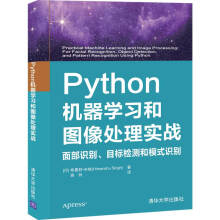CHAPTER 1 Introduction
1.1 Motivations
1.2 Crypto attacks on WLANs
1.2.1 Traffic analysis
1.2.2 Eavesdropping
1.2.3 Man-in-the-middle
1.2.4 Session hijack
1.2.5 Masquerading
1.2.6 Unauthorized access
1.2.7 Replay(or Playback)
1.2.8 Tampering
1.2.9 Forgery
1.3 Approaches to resolve crypto attacks
1.3.1 Wired equivalent privacy
1.3.2 802.11i (TKIP, CCMP)
1.3.3 VPN solution against crypto attacks
1.4 Denial of service (DOS)
1.5 Related DoS research work
1.6 Proposed approaches and contributions
1.6.1 Contributions to resolve crypto attacks
1.6.2 Contributions to resolve DoS attacks
1.7 Outline
CHAPTER 2 Experimental Methodologies
2.1 Summary of tools
2.1.1 Pcattep
2.1.2 WireShark
2.1.3 FreeRadius server
2.1.4 HostAP
2.1.5 Voidll attacking tool
2. 1.6 Wireless sniffer
2.1.7 Network simulation
2.2 Performance measurements
2.2. l TCP throughput
2.2.2 Round trip time
2.2.3 TCP time-sequence graph
2.2.4 UDP throughput and packet loss
2.3 Experimental design
2.3.1 Network emulation of AuthRF and AssRF attacks
2.3.2 Network emulation of DeauthF/DisassF attacks
2.4 Queuing model
CHAPTER 3 Protect Wireless LANs using VPN over 802.11i
3.1 Introduction
3.2 Five S problems of enterprise WLANs
3.2.1 Security attacks on wireless communication (SAOWC)
3.2.2 Stealing wireless resources (SWR)
3.2.3 Sniffing internal traffic (SIT)
3.2.4 Sharing internal resources (SIR)
3.2.5 Security backward compatibility (SBC)
3.2.6 Summary of 5S problems
3.3 Security approaches for five S problems
3.3.1 WEP
3.3.2 WEP-802.1X
3.3.3 VPN/WEP-802.X
CHAPTER 4 AuthRF and AssRF DoS Attacks
CHAPTER 5 DeauthF and DisassF Attacks
CHAPTER 6 RAP DoS Attacks with Markov Chain Model
CHAPTER 7 DoS Attacks against Wireless VolP
CHAPTER 8 Layer-3 Forwarding on Wireless LANs
CHAPTER 9 Wireless Device Server Based Sensor Management Systems
CHAPTER 10 Summary of Contributions and Future Works
展开










